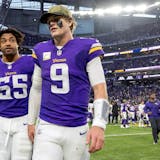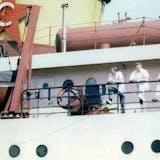Patricia Salkowicz of St. Paul did a double take as she scrolled through Target's website recently.
"Isn't that the old Dayton's logo?" she wondered as she spotted the All in Motion athleticwear the company rolled out last week.
As they planned the new clothing line, Target Corp. designers envisioned a logo representing "collective, inclusive movement" and wound up finding it in one developed for the Dayton's department store, its predecessor firm, 52 years ago.
They evaluated dozens of ideas and zeroed in on the concept of forward motion, Courtney Foster, a Target spokeswoman, said. "While exploring visuals that express this feeling, we recognized that the 1968 mark accomplished our All in Motion brand goals," Foster said.
Some people think the symbol looks like three capital letter D's. Others see three chevrons turned on their side.
Art Shipman, former creative director for Dayton's, said the original intent was neither.
"It was meant to be a flower, an amaranth," Shipman, who is now 95 and living in California, said. "I don't see any relationship of the flower to athleticwear."
Stewart Widdess, a former marketing executive for Dayton's and son of the man who gave Target its name, said the department store had a big goal for the 1968 logo.


